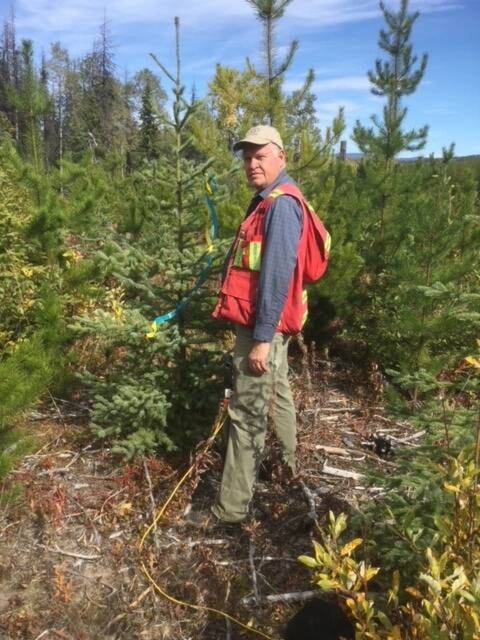Burns Lake professional forester Cliff Manning has been applying his lifetime’s worth of accrued industry knowledge to his own personal woodlot, and that especially applies to his deep understanding of wildfire.
After decades of forestry management for others (he was instrumental in starting the Burns Lake Community Forest, now a model for the province), plus silviculture and wildfire endeavours, he now focuses on his own 572-hectare Guyishton Woodlot.
Woodlots are personal-sized forest operations designed to be managed by a family or small group in harvest-regrowth cycles across generations.
He paid special attention to mitigating forest fires. His neighbours appreciate this and his peers applaud it, to the point Manning was just named the northern BC winner of this year’s Minister’s Award for Innovation and Excellence in Woodlot Management.
“Congratulations to the Guyishton Woodlot for its achievement as we celebrate the importance of innovation in promoting the full value of our forests,” said Katrine Conroy, Minister of Forests. “Several innovative forest management techniques have been completed by Manning over the past 20 years. Manning was integral to including a diversity of species into the stocking standards of many woodlots in the Burns Lake area. Manning was planting larch trees before it became standard in the chief forester’s seed-transfer guidelines. Manning has also experimented by planting Siberian larch, cedar, hemlock and Douglas fir in woodlots.”
Most elements of Manning’s personal woodlot experiment can be summed up in two considerations: how to keep it from burning, and how to keep it growing in a changing climate. These things have to be planned out over generations, not fiscal quarters like some business ventures.
“I firmly believe everyone should have access to a woodlot, to get an understanding of our forests. It’s a great way to learn forestry itself,” said Manning.
On the perimeter of his Guyishton forest he intensively cleaned up the potential wildfire fuel - the blowdown and other dry woody debris. He also reduced the amount of trees on the perimeter.
“Instead of 1,600 stems per hectare, we have 800, and we consider aspen an acceptable species,” he explained, trading per-tree income on the edges for the safety of the entire woodlot’s potential income if a fire wiped through it. Aspen (aka poplar) could also be considered a sacrifice since many mills don’t consider that brand of tree very valuable, but Manning knows there is indeed value in those hardwoods, and believes that will increase over time. Same with the rare deciduous softwood, the larch (aka tamarack).
Is it a plan that might catch on provincially?
“I’ve had the advantage over my career to work in many fields of forestry. I know it is certainly an option. I know that planting other types of species, as in deciduous, is a way of reducing wildfire intensity,” he said.
It also mitigates against a mono-forest restoration program that presents other environmental concerns, especially by ignoring pest infestations, changing climate, and evolving markets.
“Diversity in our forest licenses, and woodlots are just small-scale licenses, is a good thing,” Manning said. “The point of these awards is to encourage licensees to plant crops that will be sustainable.”
Manning now lives in Vanderhoof, but still only a 90-minute drive from his woodlot. His trees are milled at Babine Forest Products and he is proud that “I am supporting my local economy and forest industry.”
